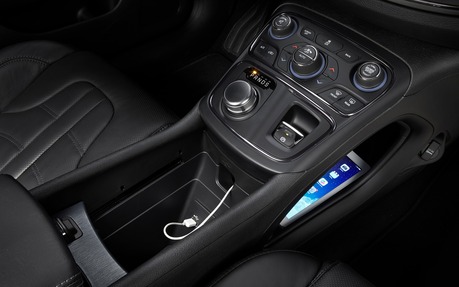The Need for More Storage Space
We don’t always realise just how important are smartphones and portable devices are. Their versatility as work and entertainment tools make them an essential part of our daily routine, and we can no longer live without them, even in the car.
Automotive manufacturers understood the necessity of integrating them to the driving experience as best they can, and thanks to Apple CarPlay and Android Auto, we can basically replace our vehicle’s infotainment system interface with the operating system of our phone. However, to do that, we need easy access to a USB port, and while we’re at it, a power outlet.
- Also: Screens Just Keep Getting Bigger
- Also: Controlling Your Car’s Interface with a Simple Hand Gesture
These infotainment screens must be located in a convenient location, as close as possible to the driver’s eyesight since—let’s not forget—he or she still has to concentrate on the road ahead. Several manufacturers such as Mazda, Mercedes-Benz and Audi, have installed floating screens on the top of their vehicles’ dashboards, but are thin so as they don’t hamper outward visibility.
Other manufacturers, notably Fiat Chrysler Automobiles, replaced the traditional transmission shift lever by a small rotary dial, while Lincoln preferred installing shift buttons directly on the dashboard. By doing this, they free up space on the centre console for storing our portable devices, and now even offer wireless charging surfaces for said devices.
And in certain cases, storage points are pushed to the extreme. In the Toyota Highlander, for example, there’s a shelf integrated directly into the dashboard, with a pass-through for the charge wires of our portable devices. Lastly, under the centre armrest of many vehicles, there’s actually enough room to hide a portable computer or a large-diameter digital tablet.
